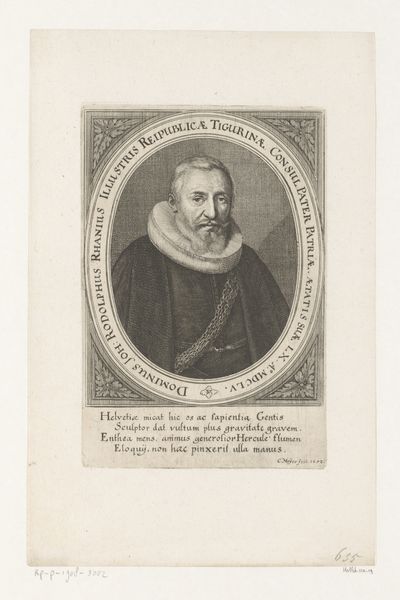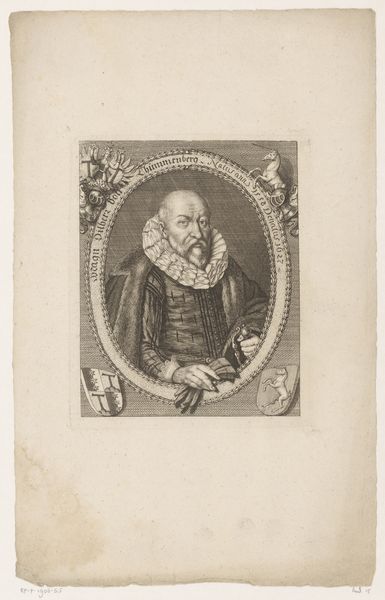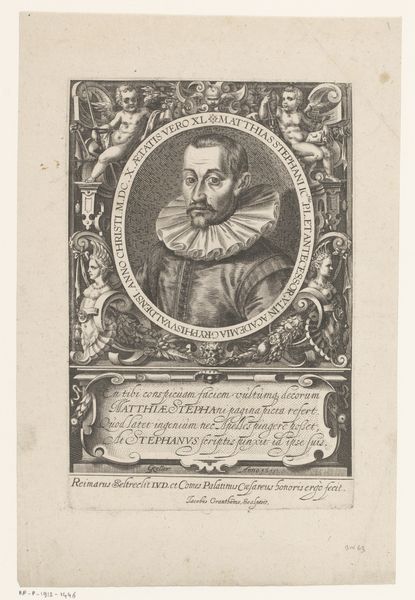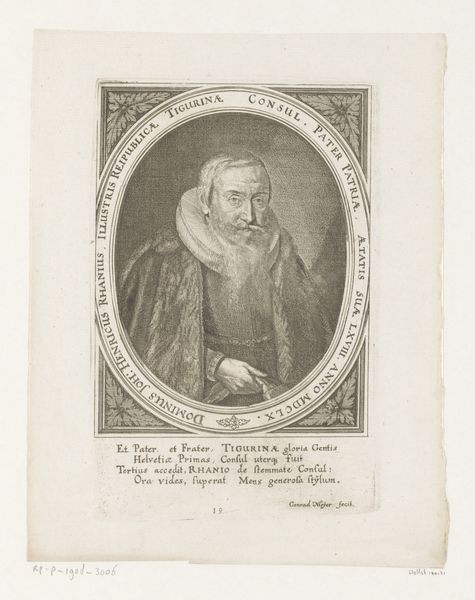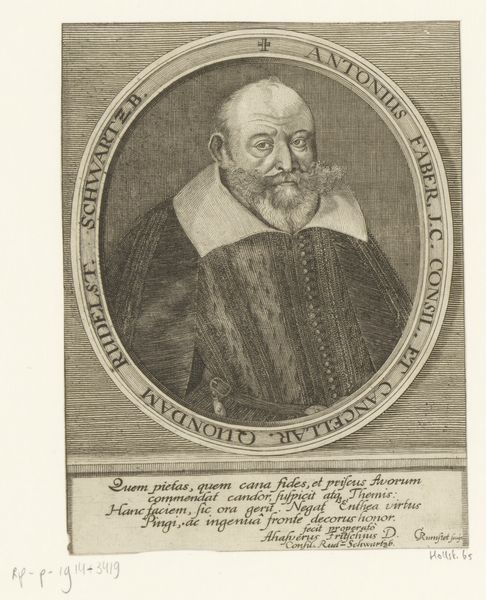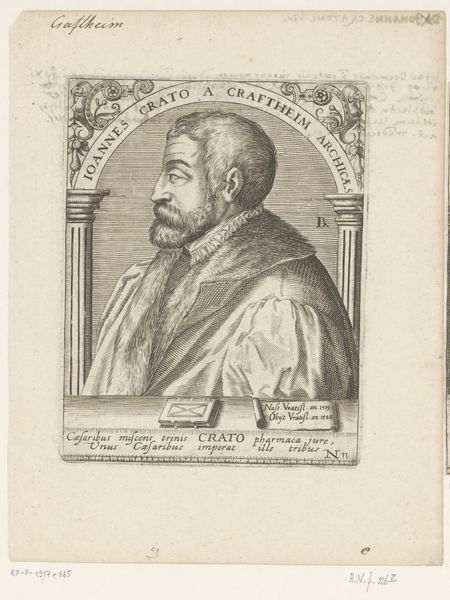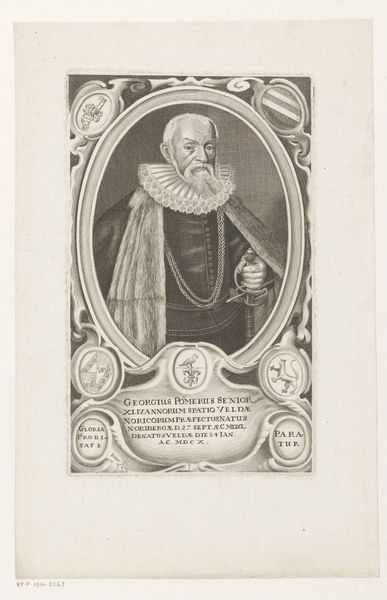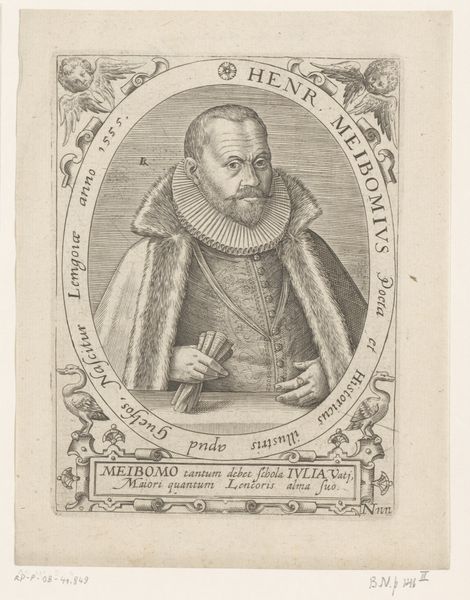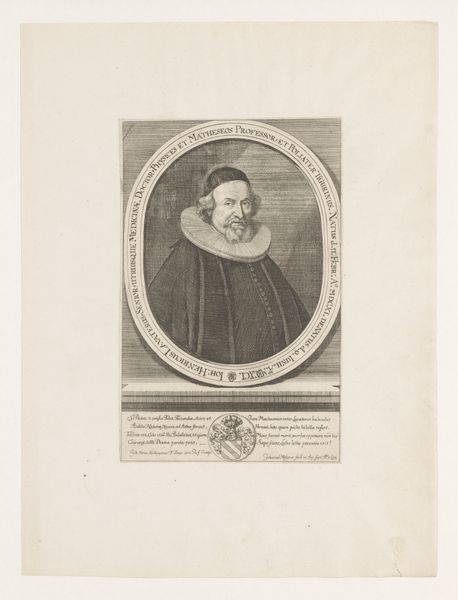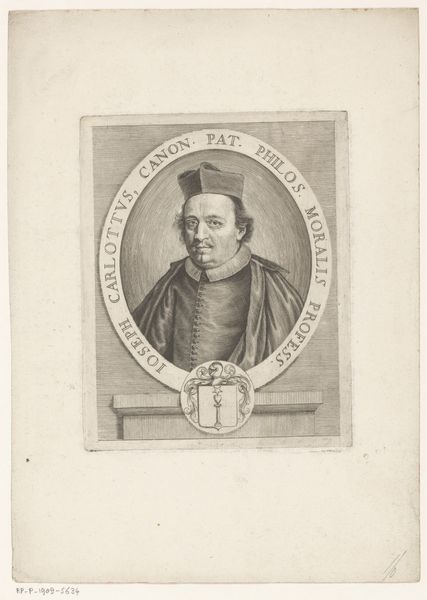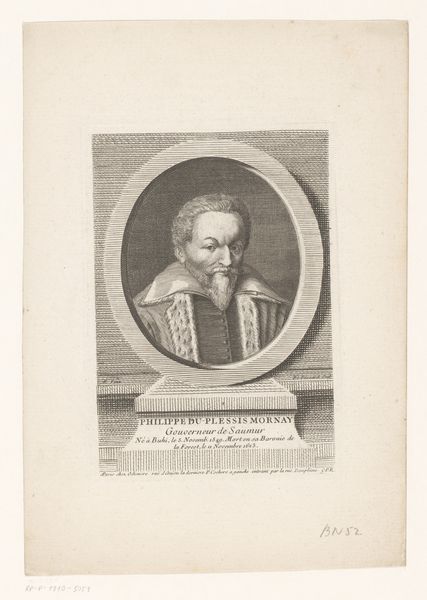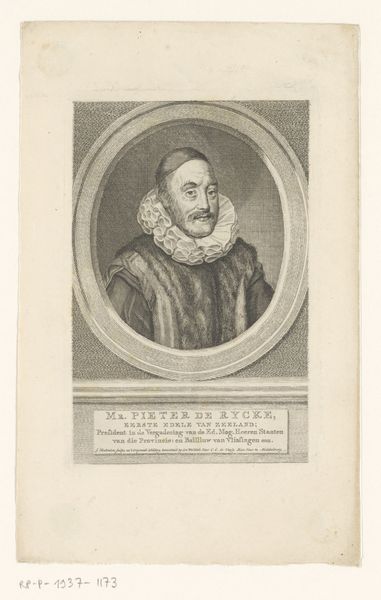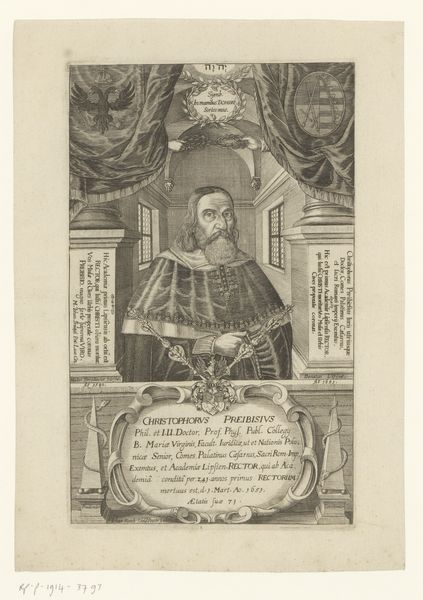
engraving
#
portrait
#
baroque
#
old engraving style
#
engraving
Dimensions: height 182 mm, width 123 mm
Copyright: Rijks Museum: Open Domain
Curator: This engraving, “Portret van Christoph Richter” dating from 1632 to 1699 by Cornelis Nicolaus Schurtz presents us with an intriguing challenge to our understanding of artistic skill and social dynamics. Editor: It’s amazing how much detail Schurtz packed into this Baroque engraving. The texture of the fur stole is quite striking. How can we interpret such a meticulously crafted piece? Curator: Let’s start with the process itself. Engraving in this era wasn't just about artistic expression. Consider the engraver’s labor, the specific tools they used, the costs associated with the copper plate, and the time invested. What does this meticulousness suggest about the sitter, Richter, and his social standing? Editor: That it was perhaps a commissioned work destined for display? And does the fact that it is an engraving, and presumably reproducible, challenge notions of the artwork as a unique, valuable object? Curator: Precisely. Engravings served as a vital means of disseminating information and constructing public images. How does the inscription below the portrait alter our understanding of it? Editor: Well, the inscription offers a kind of moral judgement, suggesting a connection to God and denial of earthly pleasures, as well as an assurance of eternal life… Were such attributes required in all portraits? How would class or politics influence the way his life might have been received by its viewers? Curator: Exactly! The work challenges the usual barriers between craft and high art and the socio-economic status of both the engraver and the portrayed subject. How might understanding the means of production reshape your understanding of the art market of the time? Editor: Viewing the piece in that way brings up lots of new angles, particularly with ideas of commodification and labour in the Baroque period. Thank you for this.
Comments
No comments
Be the first to comment and join the conversation on the ultimate creative platform.

